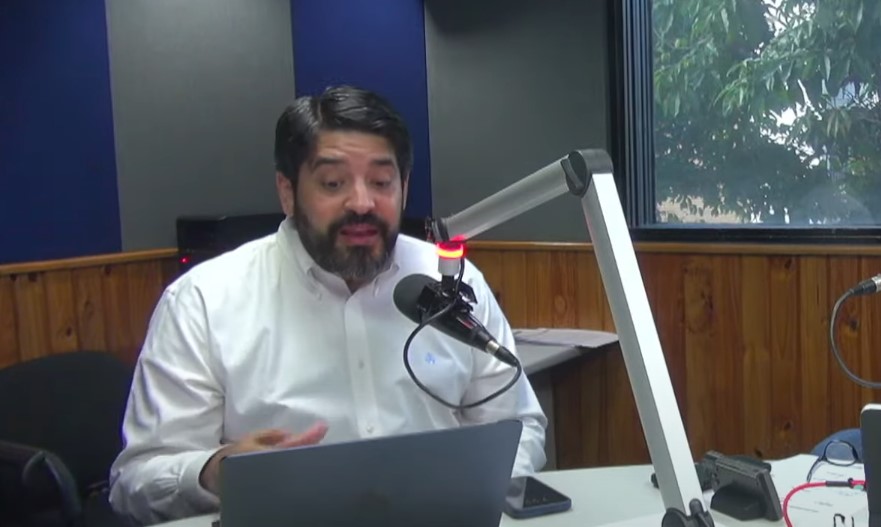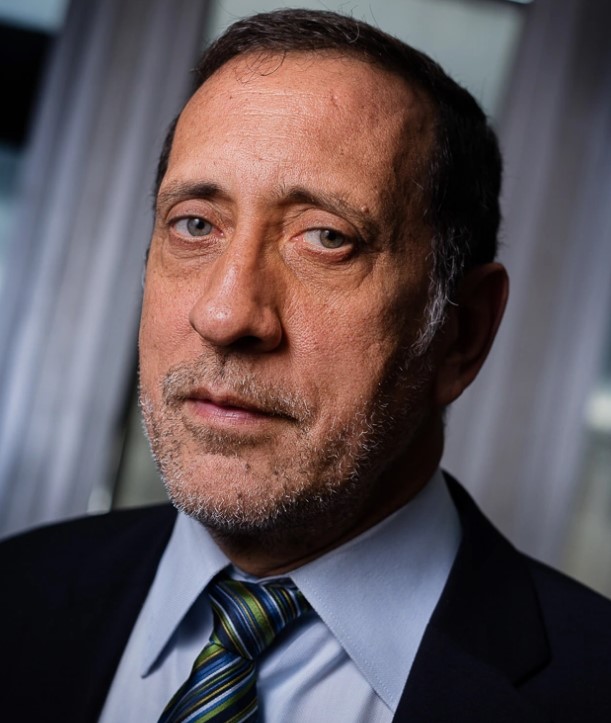-
In bolivars, only the equivalent of 3.24 billion dollars circulates, estimates say.
-
The dollars circulating in Venezuela are stagnant because dollarization is informal.
In Venezuela, the circulation of US dollars in cash doubled that of bolivars, the local currency. According to the most recent study by the socioeconomic analysis firm Ecoanalítico, in November of this year 7,821 million dollars in cash circulated in the country.
In that same period, Venezuela’s monetary liquidity, which includes all bolivars in circulation, both in cash and depositswas equivalent to 3.24 billion dollarsor just over 145,000 million bolivars.
This confirmin some way, the Central Bank of Venezuela (BCV). According to the monetary entity, the total number of bolivars in circulation exceeded 144.6 billion bolivars in Octoberequivalent to about 3.1 billion dollars at the average exchange rate of that month.


Data from the Central Bank of Venezuela. Source: BCV
The superiority of cash dollars circulating in Venezuela, over bolivars, has been growing for years. According to the Ecoanalítica report, in October 2019, the dollar circulation was USD 2,550 million. Today, there is talk of almost 8 billion dollars in circulation, of which only 20% is in banks, since the rest is in the hands of citizens.
Asdrúbal Oliveros, economist and partner-director of Ecoanalítica, pointed out Recently, if Venezuela had a more open environment for the use of the dollar, “we could use that stock of dollars to facilitate transactions and to lower pressure on the exchange market.” As the specialist sees it, “that stock of dollars is under-utilized.”
Oliveros also mentioned that physical dollars enter Venezuela mainly through the State, which has been the “great supplier of cash” through the exchange intervention scheme in force since 2019. According to the economist, a good part of these interventions are carried out in cash, given that the State obtains dollars from the oil business and, due to sanctions, must collect them in cash, then selling them to the sector. private.


Oliveros highlighted the results of the Ecoanalítica study. Source: YouTube.
A change in Venezuela’s informal dollarization
The director of Ecoanalítica highlighted a change in the process of informal dollarization in Venezuela, characterized by the fact that businesses and commerce, at the beginning of that process, They were “very exquisite” and demanded practically new dollars. According to him, in 2024 “it is no longer like before because that is a circular issue, and those dollars are impeded.”
“Yes, dollars come out, but through very informal mechanisms, from the private sector, there are no agreements with the United States Federal Reserve and our dollarization is for the citizens, informal. Commerce has had to relax those leonine conditions of everything being new,” he stated.
Despite the enormous amount of dollars in cash circulating, according to data from Ecoanalítica, the use of these currencies to pay in Venezuela has decreased significantly. The firm highlights that, during November, The dollar occupied only 24.7% of the dominance in paymentswhile the bolivar was present in three out of every four transactions, as reported by CriptoNoticias.
This was due to the exchange gap, a phenomenon that allows Venezuelan consumers to carry out arbitrage with the official and parallel quotes of the greenback. In practice, this allows save money if foreign exchange is sold to the parallel market, either in cash or through alternatives such as USD Tether, and bolivars are used in businesses that accept the BCV’s official exchange rate.
In more detail about that report, since it is only about currencies, cash payment dominated with 65%. While applications like Zelle dropped to 16% and international cards represented 9%, due to the costs associated with using the BCV exchange rate. Digital wallets captured 8% of transactions and transfers only 1.6%.
Now, when it comes to bolivars, the point of sale is the most used payment method with 66%, followed by mobile payment with 28.3%, biopayment with 3.4% and, finally, cash, with only 2.4%, according to the results of the study.
This phenomenon reflects the complexity and contradictions of the Venezuelan economy, where informal dollarization has created a scenario in which, although the dollar in cash is abundant, Its use in transactions has decreased in favor of the bolivardriven by the dynamics of the parallel exchange market and local economic conditions.
The Venezuelan repudiates the bolivar and embraces the dollar
For José Guerra, economist, university professor and former Venezuelan representative, the disparity that exists between the amount of dollars and bolivars that circulate in the Venezuelan economy “evidently means that the economy is de facto dollarized.” Also, that there exists, on the part of Venezuelans, a clear preference for the greenback rather than its own local currency.
“There is repudiation of the national currency due to inflation, devaluation and because people opt for the dollar because it is safer,” said Guerra, who is a member of the Venezuelan Observatory of Finance (OVF) and former economic research manager at the Central Bank of Venezuela, to CriptoNoticias.


Guerra affirms that the proportion between dollars and bolivars in circulation is wider. Source: Fandom.
In Guerra’s opinion, although the Ecoanalítico figure is close to the monthly reality, the proportion is much higher in broader terms. “If you add the dollars that are in cash on the street circulating, which is difficult to know, plus what is in the banks in the form of piggy banks, I would say that the liquidity in dollars is almost 10 times the liquidity in bolivars,” he assured.
In this he agreed with Daniel Lahoud, also a Venezuelan economist and university professor, who in comments to this medium highlighted that it is possible that the proportion between the circulation of dollars and bolivars in cash “It could be a little more than double.”
According to Lahoud, there is no problem with that. For him, “it is simply the decision of the people.” “The only thing is that they do not save in bolivars, but in dollars,” he indicated.
Guerra explains that the fact that there are more dollars in cash than bolivars in circulation, but at the same time the greenback has lost space in the spectrum of everyday payments, responds to the pure decision of the Venezuelans.
“Venezuelans decided not to spend the dollars, but to save them. Furthermore, although it is paid in bolivars, everything is denominated in dollars, and the vast majority of Venezuelans do not earn dollars, but in bolivars, and they use the bolivars to the extent they can,” he said.
This agreed with what was said by Lahoud, who maintains that the Venezuelan economy is deeply informalized, so, to avoid paying tariffs, such as 16% of the Value Added Tax and 3% of the Large Financial Transactions Tax, people avoid paying with dollars in cash. “And the government loses the opportunity to supervise the transactions,” he said.
Reversing dollarization is very difficult in Venezuela
For both economic specialists consulted by CriptoNoticias, It is very difficult to reverse the phenomenon of informal dollarization in Venezuela. Both cite the cases of Bolivia or Peru, which faced economic crises where the dollar served as a lifeline, and where although there have been improvements, de facto dollarization has not been successfully reversed.
Guerra says that to reverse this situation “a long period must pass for the economy to stabilize and confidence to be restored.” “This takes time and it is not visible in Venezuela that this could happen,” he emphasized.
“Compulsively the government can order it, but with a devaluation like the one that occurs in Venezuela, everyone runs to the dollar and uses the bolivar for small transactions. The bolivar is for public services and transportation,” he indicated.
For Lahoud, to encourage the use of the bolivar over the dollar, The BCV has to stop issuing money. “Which will probably add some stability to the bolivar,” he assured, although he stressed that, under current conditions, Any average Venezuelan prefers the dollar instead of the bolivar.


Lahoud maintains that the Venezuelan economy is deeply informalized. Source: Courtesy CriptoNoticias.
“To have monetary quality, a currency must be a means of payment, unit of account, and reserve of value. The bolivar is only a means of payment. It is not used to set prices. It is also not used as a store of value. The only currency that fulfills all three monetary functions is the dollar. “That tells you what Venezuelans consider about their preferred currency,” he concluded.
Crypto Keynote USA
For the Latest Crypto News, Follow ©KeynoteUSA on Twitter Or Google News.







